Crus Bourgeois return to classification
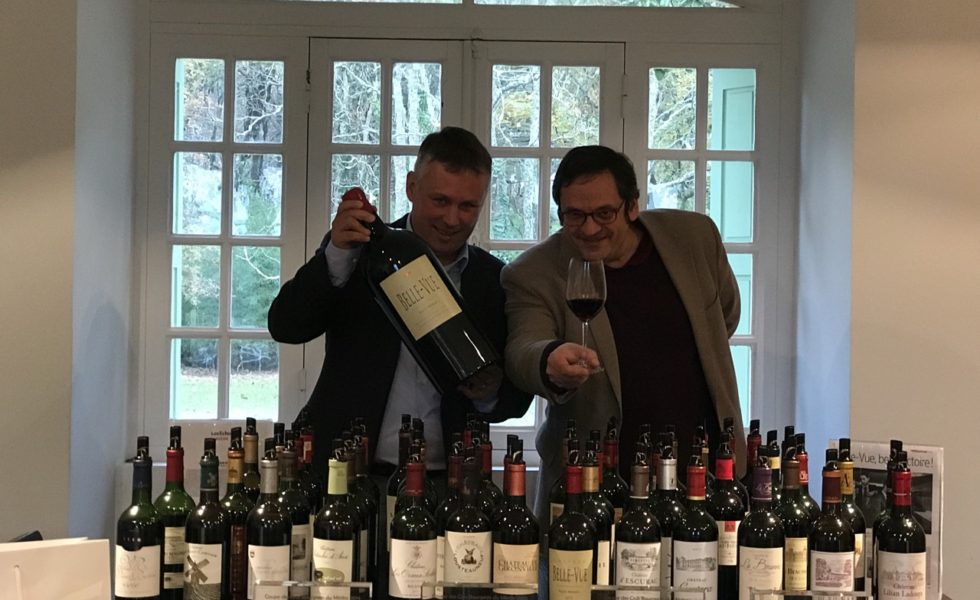
And (many) tasting notes from 2015 in bottle
By Panos Kakaviatos for wine-chronicles.com
14 January 2018
One of the great, if short-lived, periods in the modern era for the Cru Bourgeois wines of Bordeaux was a 2003 ministerial order that approved the first official classification of the Crus Bourgeois du Médoc, which recognized 247 châteaus out of 490 candidates.
I recall attending a tasting of the top nine wines in New York City back in 2004. It was great to see names like Haut Marbuzet, Phélan Segur, Ormes de Pez among others being tasted as top tier Cru Bourgeois. The full list was as follows:
But some châteaux that had not been included denounced the classification as unfair, and arguments about conflicts of interest in judging the classification bore fruit.
In 2007, the Administrative Court of Appeal of Bordeaux annulled the 2003 decree that had approved the classification. Whatever the merits of the case, it was a shame to see the end of such a useful reference tool.
But now, we have (good) news from the Alliance des Crus Bourgeois that French government this month just approved specifications and a verification procedure to be used to establish a new Crus Bourgeois du Médoc classification.
Good news, for wine geeks like myself, although I am not sure it will matter all that much to the broader wine buying public.
Texts that define the selection criteria and procedures for candidate properties were approved at Extraordinary General Meetings of the members of the Union of the Crus Bourgeois du Médoc.
For whatever it is worth, this represents a return to the historical hierarchy of the Crus Bourgeois du Médoc, with three categories: “Cru Bourgeois”, “Cru Bourgeois Supérieur” and “Cru Bourgeois Exceptionnel.” These designations should be (re)appearing on wine labels again starting from the 2018 vintage.
More on the news here, but it all appears quite rigorous, including tests and inspections carried out throughout the classification period, with a commitment to consumers, traceability and authentication of each bottle.
Meantime, I applaud the fine work of the Alliance de Crus Bourgeois of Bordeaux, which in the intervening years has done so much to keep the Cru Bourgeois alive and kicking, even though it sometimes seemed to be more of a catch-all category, without the three-tier classification. Many top wines from the 2003 classification chose not to be part of the category following 2007, so I do hope that they would come back with deserved “exceptional” monikers, for example, although wines like Potensac have been making such amazing strides in recent years, that they may see themselves as being beyond “Cru Bourgeois” as, for example, Sociando Mallet always has considered itself.
In any case, the Alliance promotes healthy cooperation amongst all the Cru Bourgeois wines – which have been declared in each new vintage. It gathers some 300 estates coming from all Médoc vineyards authorized to produce wine in one of the eight Médoc AOCs : Médoc, Haut-Médoc, Listrac-Médoc, Moulis en Médoc, Margaux, Saint Julien, Pauillac and Saint Estèphe. In tasting them over the years, I have come to enjoy several estates that are excellent.
What is the origin of the Cru Bourgeois name?
In the Middle Ages, the bourgeois were inhabitants of the “Bourg” of Bordeaux, a town of merchants and craftsmen. During the period of English rule, they acquired rights and privileges, including exemption from taxes on the sale of the wines from their vineyards both locally (Guyenne) and abroad.
By the 15th century, enriched by international commerce, the bourgeois of Bordeaux acquired fine properties in the region, which were initially referred to as the “Crus des Bourgeois” and then simply the “Crus Bourgeois”
2015s from bottle
Tasted on 4 December 2017 at Château Belle Vue.
First based on tastings of many of these wines from barrel back in the Spring of 2016, and from a tasting late last year from bottle, covering the eight Médoc AOCs.
Although the vintage in the Médoc roughly favored the southern regions most – especially Margaux – in the Cru Bourgeois level, winemaking rigor seems to matter most. So for example one can find a weaker wine from the south from an “underperforming” estate and a better wine to the north from producers who have more rigorous selection criteria, for example.
In addition to my tasting notes, I add the term “exceptional” to estates I believe would be worthy of having the top category in the coming reclassification.
Many thanks go to the Alliance de Crus Bourgeois, which organized this tasting at the lovely Belle Vue in Macau, not to far from the cru classé Château Giscours.
As usual, a wine in bold I like in particular; if red and bold, even more and if underlined, too, a kind of wine nirvana.
MÉDOC
Château La Tour Haut-Caussan – A blend of 50-50 Merlot and Cabernet Sauvignon, this wine comes across just a bit vegetal for the vintage, and thus disappoints the taster.
Château Tour Castillon – Here we sense a bit too much oak on the nose, as it sits in the glass, and the palate is too oak driven as it dries out a bit on the finish.
Château Vieux Robin – At 13% alcohol, with a blend of 55% Cabernet Sauvignon, 40% Merlot and the rest Petit Verdot and Cabernet Franc, this wine may not be the most concentrated among the cru bourgeois in 2015, but it exudes some bright and ripe red fruit. 85/100
Château Les Ormes Sorbet – Pleasing fruit driven nose. Ripe black and red fruit. The palate is not as full bodied as one would expect from the nose. Still, a tasty palate that resembles more Patache d’Aux than anything else. Maybe a better barbecue wine as it seems to have slightly more grip. 87/100
Château Lousteauneuf – Mainly Cabernet Sauvignon. Dark fruit and plum aromas; prototypical Bordeaux. A touch of Cabernet roasted green pepper aspects, but good juiciness and perhaps the best so far of the Médocs. Grip and juiciness. Nice job! 13% alcohol 87/100
Château Labadie – A far more Merlot driven wine, almost the opposite in blend from the above with 63M-33CS-4CF. The nose is a tad austere and the plum is there but just ripe enough, with a certain diluted aspect on the palate. 13.5% alcohol.
Château d’Escurac – Here we have 55CS, 45M and 5PV at 50 yield. At 14%, the highest alcohol level so far. This is rather rich, and one can feel a certain warmth. It is tasty and one senses a control of yields to bring about pleasing concentration. Rather succulent. 87/100
Château Castera – This has a bit of toast on the nose but the palate is quite lovely and balanced and rather refined, perhaps the most among the cru bourgeois. I like a certain high toned spirit, lending freshness but it is ripe with good concentration. 43 hectoliters per hectare, with 65% Merlot but not overly Merlot-y. 13% alcohol. 87/100
Château La Branne – This by contrast seems a bit less grippy and the yields are 55. While not diluted it lacks decent enough grip to really convince me. 13.5% alcohol.
Château Blaignan – This has a candied nose. Bright fruit. A bit sweet in aspect, a bit cloying… 13% alcohol.
Château L’Argenteyre – At 55 hectoliters per hectare, high yields. A rather pleasing nose, with oak touches and ripe red fruit. Here we have a case of grip, in spite of higher yields. Not as impressive as the Castera, but there is freshness and pleasing grip. An above average barbecue wine. Equal to perhaps Les Ormes Sorbet. 87/100
HAUT MÉDOC
Château Labat – At 13.5% alcohol blending 50-50 Cabernet and Merlot, this wine exudes a pleasing, clear fruit driven nose. This has pleasant grip and ripe fruit, perhaps a bit more richness than the Medocs tasted previously. Enjoyable with tannic grip and an enveloping palate. Nice! 89/100
Château Lamothe-Bergeron – At 13% alcohol and with 55% Cabernet Sauvignon, a bit more strict than the above. Has depth and richness, but seems to exude some slightly stricter tannins. Give it time in bottle as I suspect it will soften with age. 87/100
Château Larose Trintaudon – A disappointing showing from a wine that is widely available in many US markets. Blends 55% Merlot, 45% Cabernet Sauvignon and 7% Petit Verdot. Sure, pleasing ripe fruit, with some spice. But the palate is rather diluted compared to the two previous wines. It is OK, and I would classify it as a barbecue wine. Merchants in the US should look elsewhere for better quality cru bourgeois than this omnipresent wine. 13.5% alcohol 85/100
Château Magnol – Just at 48 hectoliters per hectare, with 48% Merlot and 12% Cabernet France and the rest Cabernet Sauvignon. With 13.5% alcohol. Deep, rich fruit on the nose, dark fruit and plum. Very enticing. The palate is robust and succulent, if not the most refined wine from the Médoc, it is delicious. 90/100
Château Gironville – Lovely ripeness. This has fresh bouquet on the nose, with bright fruit. Quite rich too, but not over done. A certain finesse. A bit more focused than the Magnol. In any case, bravo as well! 13.5% alcohol and a blend of 50% CS, 40% M and 10% PV 91+/100 (exceptional)
Château Devise d’Ardilley 13. 45M 50CS 5PV – From 10 hectares. Nose is a bit too oaky. Tannins a bit strict. They are fresh enough but lacking the nuance and panache of the preceding wine.
Château Charmail – An old favorite of Robert Parker, and deservedly so, this blend includes a whopping 11% Petit Verdot, along with 41% Cabernet Sauvignon and 35% Merlot at 14% alcohol. Yields at 43 hectoliters per hectare. Quite a powerful nose, with cool fruit as well as burgeoning tobacco and plum. Richness on the palate, but also grip and finesse. A hint of drying however on the finish? Still, pretty darn good. 90/100
Château Cambon La Pelouse – What a lovely nose here, nuanced with cool tobacco aspect as well as ripe fruit. Not so drying on the finish, if just a touch warm? One of my favorites of the entire tasting today. 92/100 (exceptional)
Château D’Agassac – Fresh and medium bodied with fine fruit expressions, if not as bright as some of the wines here tasted, as there is a certain matte quality to it. Low yields at 35 hectoliters per hectare. Perhaps the austerity of the Cabernet is giving it a certain closed aspect? It has 81% Cabernet and the rest Merlot … 89/100
Château Beaumont – The nose is strangely not as ripe as I would have expected from the vintage. And yet the palate shows fine grip and ripe fruit, red and black. Not the longest finish… But pretty good stuff. 89/100
Château Belle-Vue – 45% CS-40M% Merlot and … 15% Petit Verdot! 13.5% alcohol. A large bottle, thick, but not a garage wine. ? Serious cassis and plum nose, with oak related aromatics that do not distract too much. 30% percent new oak. The palate is well structured, yet succulent, too. While not as impressive as Cambon La Pelouse, it is very nice. Tasted again, and I like its expansive qualities on the finish. 91+/100 Nice and likely in the exceptional category.
Clos la Boheme – 60% Merlot and 40% CS. Nose is a bit cabbage like? But juicy and tasty, on the palate, with refreshing aspects. I enjoy this. It seems just a touch heady, but not drying. I am guessing 14% percent alcohol, as it is not indicated. 87/100
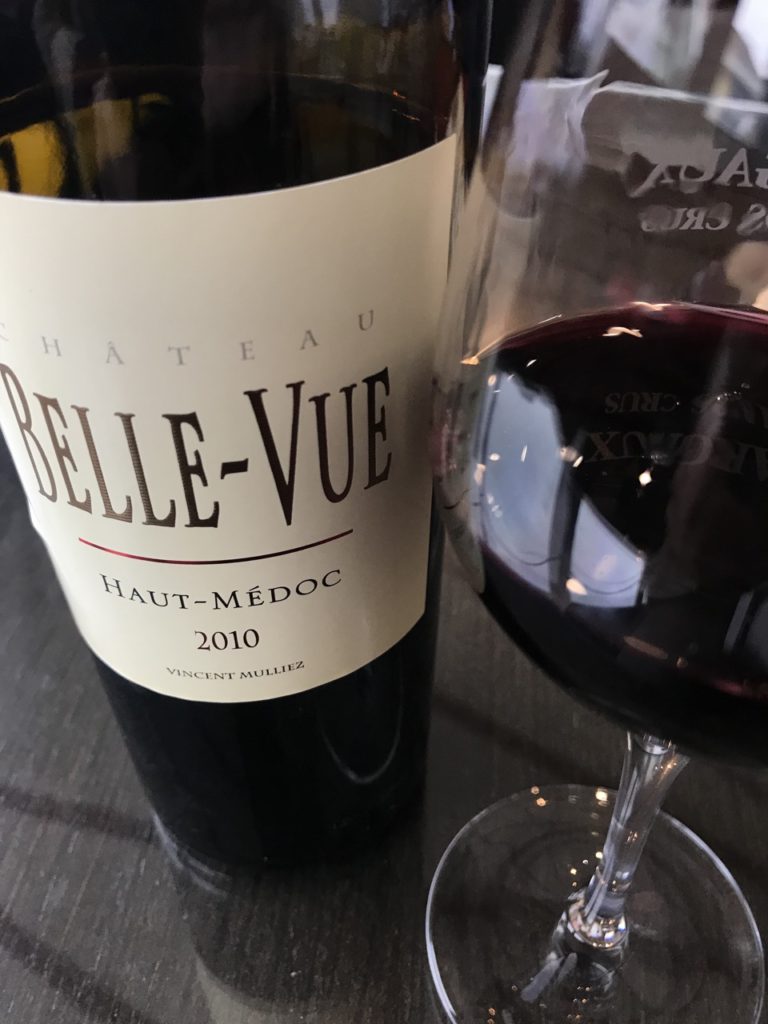
This 2010 was great for lunch, proving that quality cru bourgeois can be revisited years later. Indeed, this was youthful in profile.
Château Peyrat-Fourthon – 40 hectoliters per hectare in yields. Oak driven nose, however, this blend of 50% CS, 41% Merlot and the rest Petit Verdot. 13% alcohol. A touch raw tannin, but there is succulence and juice on the mid palate, just not as smooth as some of the better wines today. I like the tannic power however, as it does NOT dry on the finish: give it time. 89/100
Château du Taillan – 70M, 20CS, 10CF. 48 hecto. 14. This is juicy and ripe, and yet I could not help get a feeling of a bit drying on the finish… As if too many oak tannins were extracted. 86/100
Château Saint Ahon – Rather nuanced and slightly spicy nose. Pleasing palate, crisp and fresh with ripe fruit. A tad pinched on the finish however, slightly astringent, but only so slightly. Goes great with grilled meats at a bistrot or brasserie. It has 13% alcohol and was cropped at 45 hectoliters per hectare. 57% CS, 34% M, 6% PV and 3% CF. 87/100
Château Du Moulin Rouge – Succulent, pleasing nose, marked by plum fruit. The palate is not as rich as the nose seems to promise – as the finish is somewhat austere, but chalk that up to the Cabernets. Otherwise, pretty darn good! 88/100
MARGAUX
Château d’Arsac –This is smooth and elegant and a lovely wine – and better than their 2014. 13.5% alcohol and nearly 60 hectoliters per hectare in yields. High yields and excellent wine, a blend of 72% Cabernet Sauvignon and 28% Merlot. A bit more austere than the also excellent Paveil de Luze. 91+/100 (exceptional)
Château Bellevue de Taillac – Loads of Merlot at 70% … with 13.5% alcohol. Lower yields at 40 hectoliters per hectare, but too oaky for my taste. Has that “spoofilated” and drying aspect that detracts.
Château Deyrem Valentin – Deep and rich and even a touch minty. Quite opulent – 14.5% alcohol – but lacks the finesse of a truly fine Margaux. More like a commercial wine of über-ripeness, this blend of 50% CS, 49% M and 1%PV? I can see how it would please palates though, even if it dries just a tad on the finish 87/100
Château La Fortune – A decent Bordeaux expression, but not particularly refined. It is tasty and robust to be sure, this blend of 74% CS. and 26% M at 13.5% alcohol. But not particularly Margaux in character. 87/100
Château Mongravey – Dark color. The palate has a bit of drying on the finish and the tannins lack the refinement one expects from Margaux.
Château Paveil de Luze – Succulent and refined. Floral. Rather elegant, even if the tannins are somewhat austere at this stage. But I think it is more a question of their calming down in bottle. I love the medium-bodied mid palate here. Very juicy too. Bravo! A certain aspect of fine breed comes through as Margaux. 92/100 (exceptional)
Château Pontac Lynch – Between the communes of Cantenac and Margaux. Just 31 hectoliters per hectare, with 45% CS, 5% CF, 45%M and 5% PV. Again, as with La Fortune, a Bordeaux expression impresses but not as refined as one would expect from Margaux. It is savory, however, if a touch drying. The 14% alcohol? Extracting a bit too much of the oak? The floral notes escape me here … 87/100
Château Tour de Mons – Higher yields than the above at 47 hectoliters per hectare and yet a superior wine, this blend of 59% M, 35% CS and 6% PV at 14% alcohol. Nose is just ripe enough plum with an easy drinking, smooth talking Margaux aspect: Yes, there is a certain elegance here that is not as present as in the preceding wine, even if it is not as refined as the Paveil. Nice job overall! 89/100
Château Haut-Breton Lariguadiere – I love the name of this wine, which I had enjoyed in the 2014 vintage. The 2015 is better. OK, you have a bit of a new oak nose but not distracting. The palate is smooth and robust. Ripe fruit! A touch drying tannin on the finish detracts from the finesse but it is very pleasant overall this blend of 80% CS, 12% M and 8% PV at 13.5% alcohol. 87/100
Château Tayac Plaisance – Nose exudes deep, ripe dark fruit. Quite serious, yet ripe on the body as well, which is both smooth and concentrated. Far better than the preceding wine, with more depth perhaps coming from some old vines some of which had been planted in 1931. An excellent cru bourgeois Margaux cropped at 50 hectoliters per hectare and blending 50% CS, 45% Merlot and 5% PV at 13% alcohol. 90/100
LISTRAC MÉDOC
Château Fonreaud – These guys are at 38 hectoliters per hectareyields, with 52% CS, 44% M and 4% PV. Lovely, ripe fruit nose. The palate is rich and yet nicely structured. Finish is medium. Overall a very good wine that would go well with lamb as well as other meats. Robust. A fine Listrac in 2015! 13,5% alcohol. 89/100
Château Lestage – About the same yields as the above, but with more Merlot, and a slightly warmer nose no doubt due to the Merlot majority. More succulent, and although the preceding wine has broader shoulders, this one seems to rise above with greater juicy pleasure. 89/100
Château Vieux Moulin – With old vines of Petit Verdot (7%) and 58% M and 35% CS, this was a “gold medal” winner in a Paris wine competition. It conveys more refinement than one may expect from the appellation! A fine bottle of red. Yet it is a bit raw, the tannin, on the finish… Overall, more finesse at the opening than Lestage. Nice job! 89/100
PAUILLAC
Château Fonbadet The blend is of course dominated by 60% CS and the rest being 20% M, 15% CF and 5% PV and Malbec. Robust and savory at the same time: this is a darn good drink! 13% alcohol. It feels like a 2009, but more constrained. Structure and richness, with a fine tannic aspect. Ripe and never drying. This goes to the exceptional category. 91/100
SAINT ESTEPHE
Château Lilian Ladouys – Lovely bright red berry fruit. Crushed tobacco rather well defined on the nose. Smooth and ripe. A bit short on the finish, but overall a very pleasurable wine. 90/100
Château Le Boscq – More of a ripe plum aspect on the nose than the above. This is rather juicy on the mid palate but then dries up just a tad on the finish. Bigger start than the previous one. After lunch, with food in the system, you notice this less… 89/100
Château Le Crock – I was not sure about the sample so note is reserved. Usually shows great, however.
Château Lafitte Carcasset – Oak driven aromas at first. Linear palate, sans too much richness and tannins that seem closed in, but not drying. I like the somewhat crushed tobacco nose. The overall impression is of a wine that would have liked to have been more opulent on the palate but could not. 87/100
MOULIS
Château Biston Brillette – Straightforward yumminess. Pretty solid, ripe and structured. Overall, a fine wine, with robust plumpness. And perhaps the most pleasingly structured among the Moulis tasted today. 13% alcohol and a 50-50 blend of Merlot and Cabernet Sauvignon, cropped at 45 hectoliters per hectare. Recommended! 90/100
Château Brillette – This comes across as a bit too clever by half. The ripeness is there and so is a broad mouth filling palate, but the alcohol is felt, and I while some customers want that ether, I feel that the wine is a bit too large scaled for its own good, without enough finesse to get a star among cru bourgeois. Blend of 49% CS, 47% M and 4% PV. 88/100
Château La Garricq – A bit tight and pinched overall, almost suffering from the opposite problem of the above wine. Blend is 50% M, 40% CS and 10% PV.
Château Gressier Grand Poujeaux – Not so nuanced, but bright, with fine tannic structure that lends seriousness to the 13.5% alcohol and full body. Overall the quality fits the bill of a solid cru bourgeois: no more, and no less. 87/100
Château La Mouline – Burgeoning animal aspects? A bit rough tannin on the nose. Palate is robust yet not plump, marked a bit by rustic tannin.
Château Moulin a Vent – Pleasing coco powder on the nose. Plum fruit. Palate is plump and pleasurable. Not the most finesse driven cru bourgeois, but certainly enjoyable. Some freshness on the nose reassures! The blend is 68%M, 23% CS, 7% CF and 2% PV clocking in at 13% alcohol. 89/100
Château Pomeys – This provides a fine bookend to the Moulis wines I tasted. A very pleasing wine. It has structure and ripeness with no loose ends. Fresh and ripe. Medium to full-bodied, and elegant overall. Bravo! 91/100
 Wine Chronicles
Wine Chronicles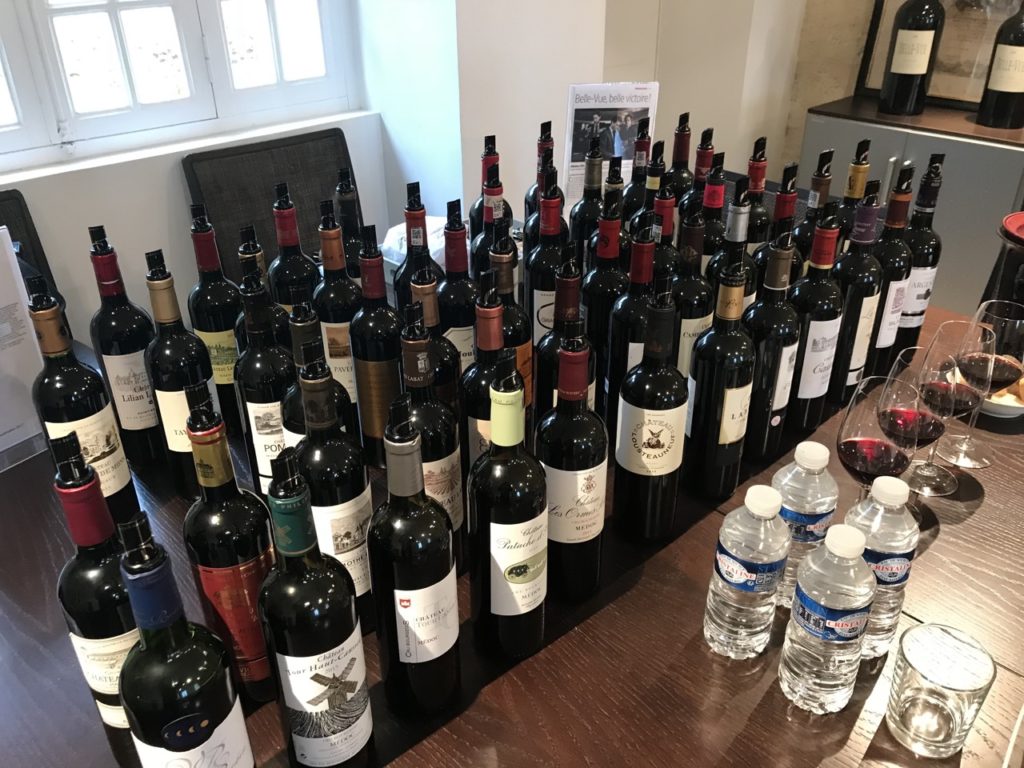
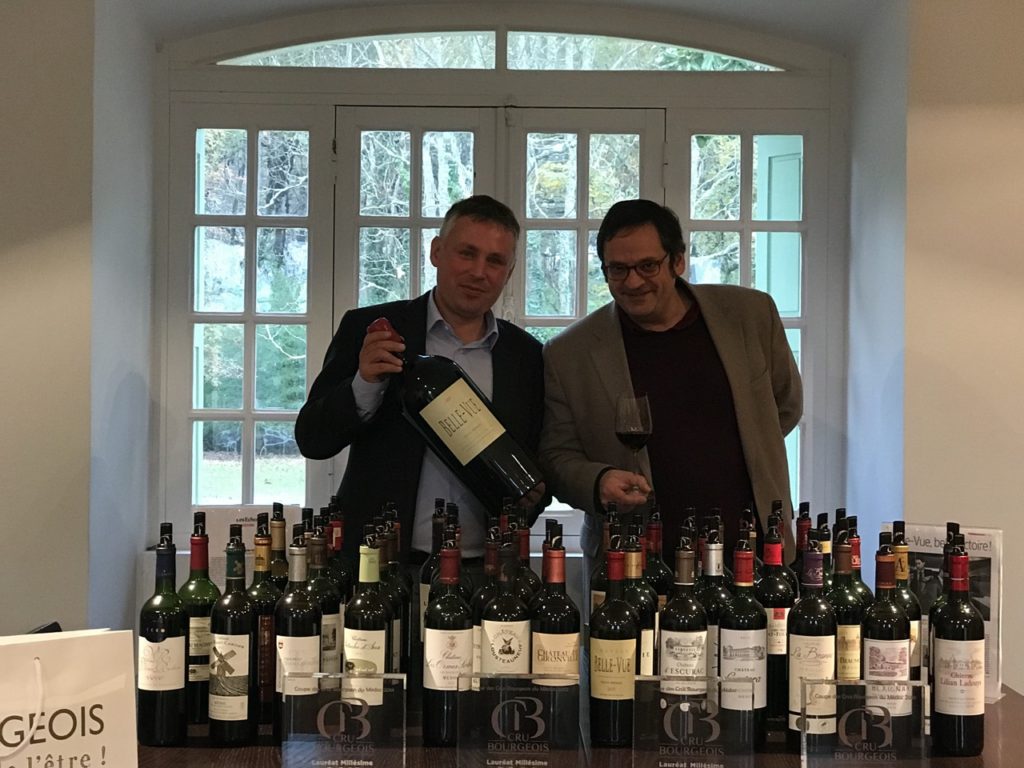
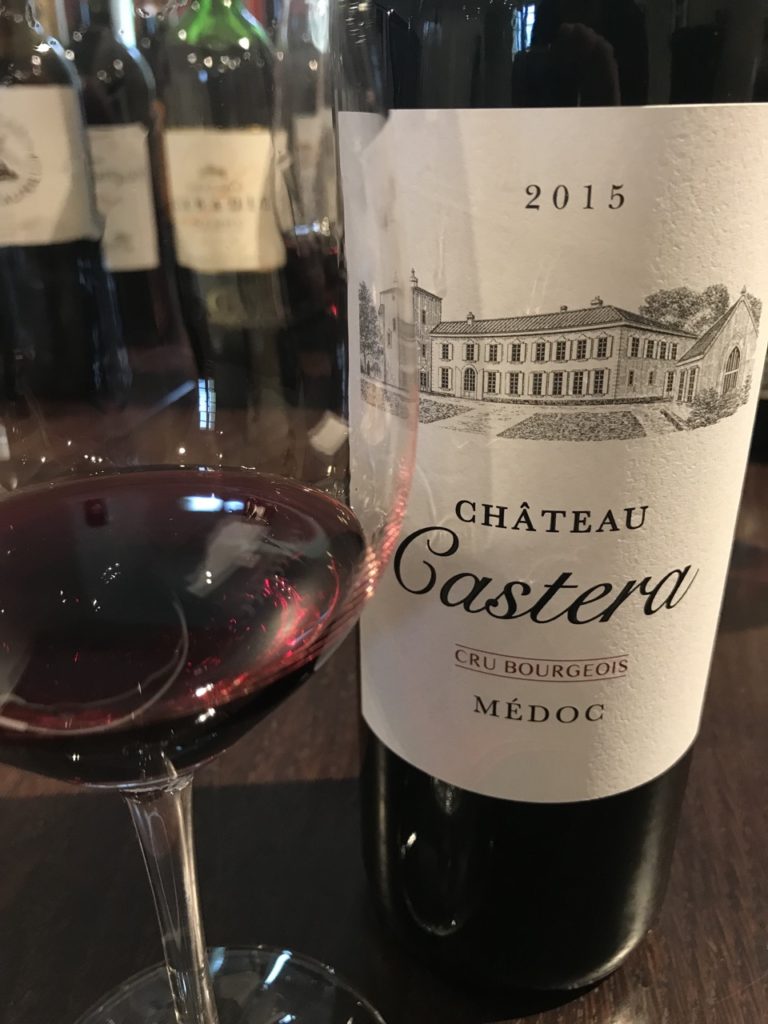
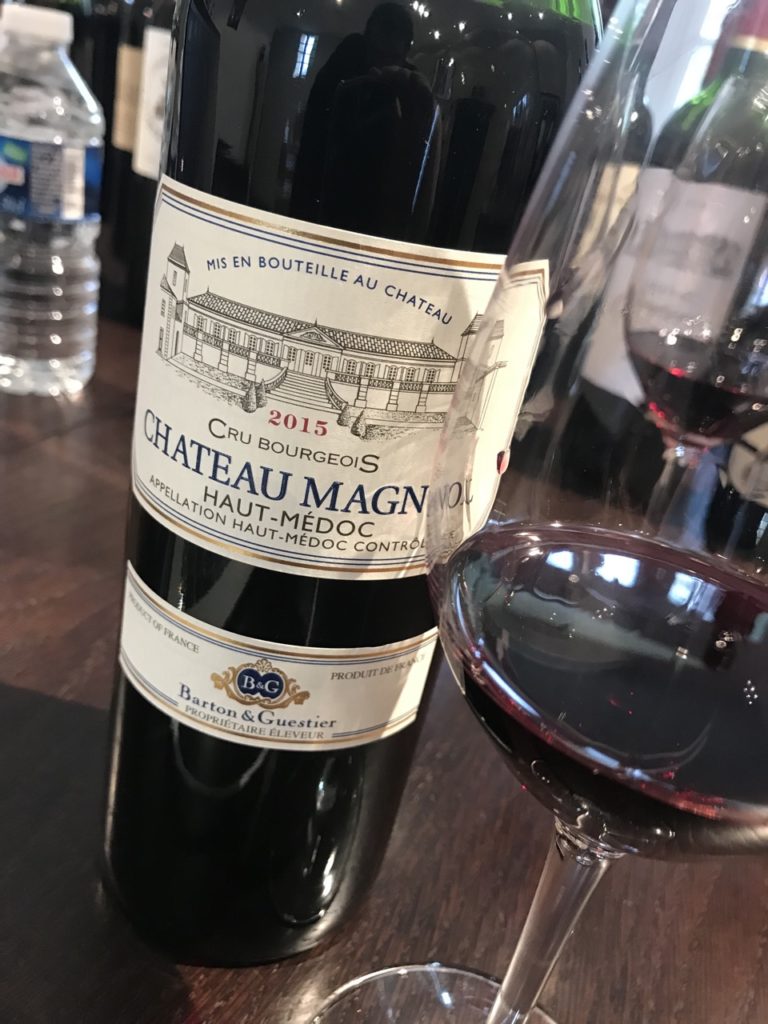

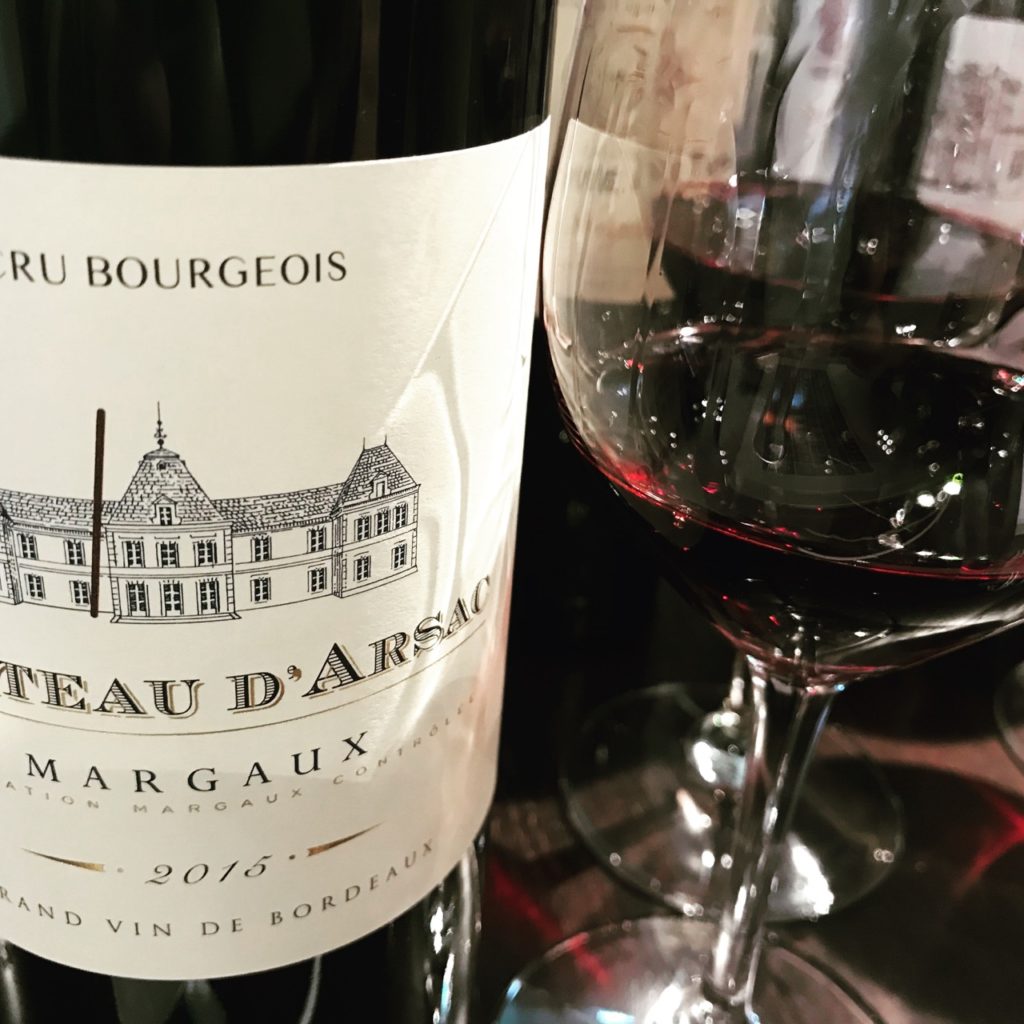
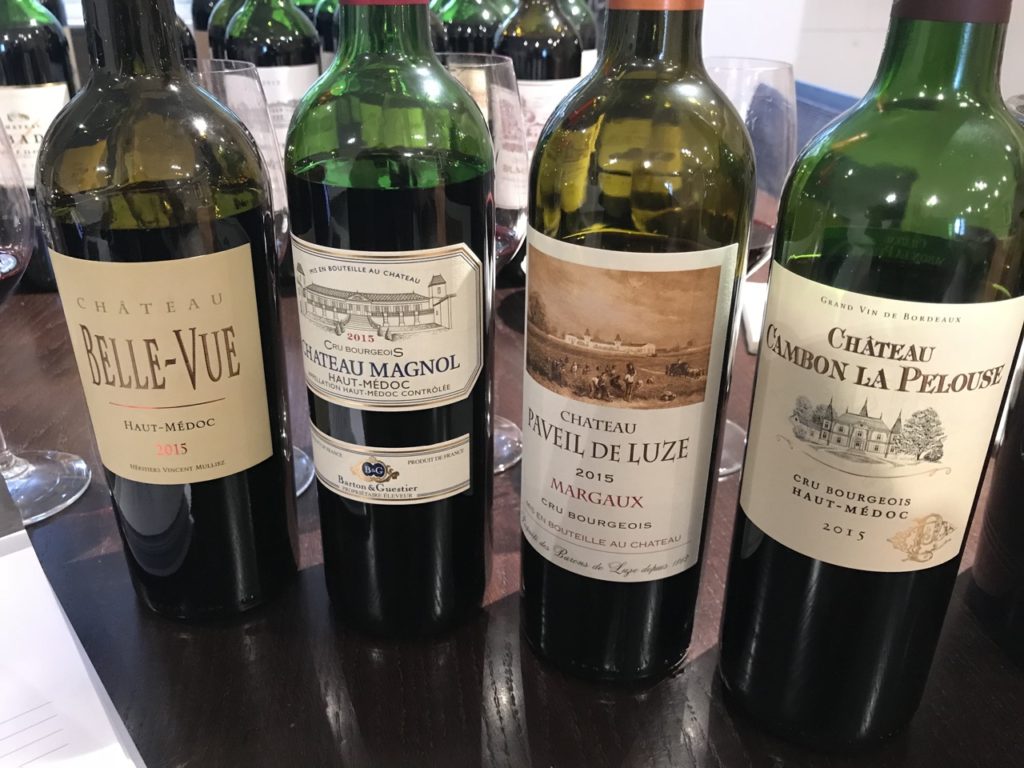
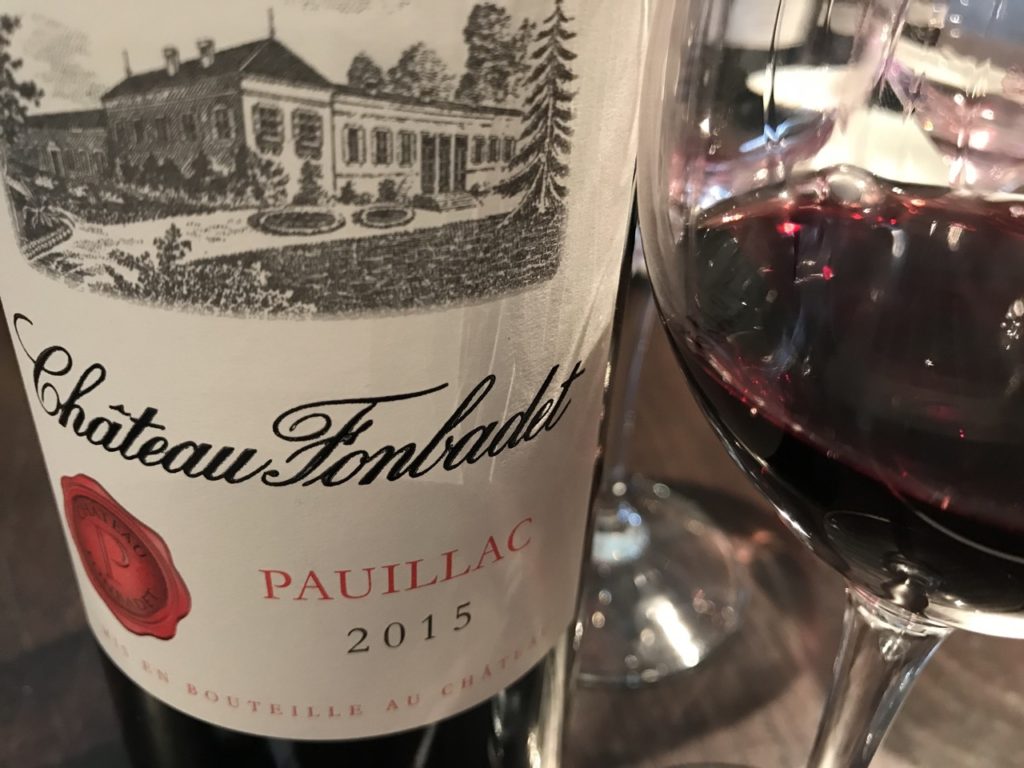
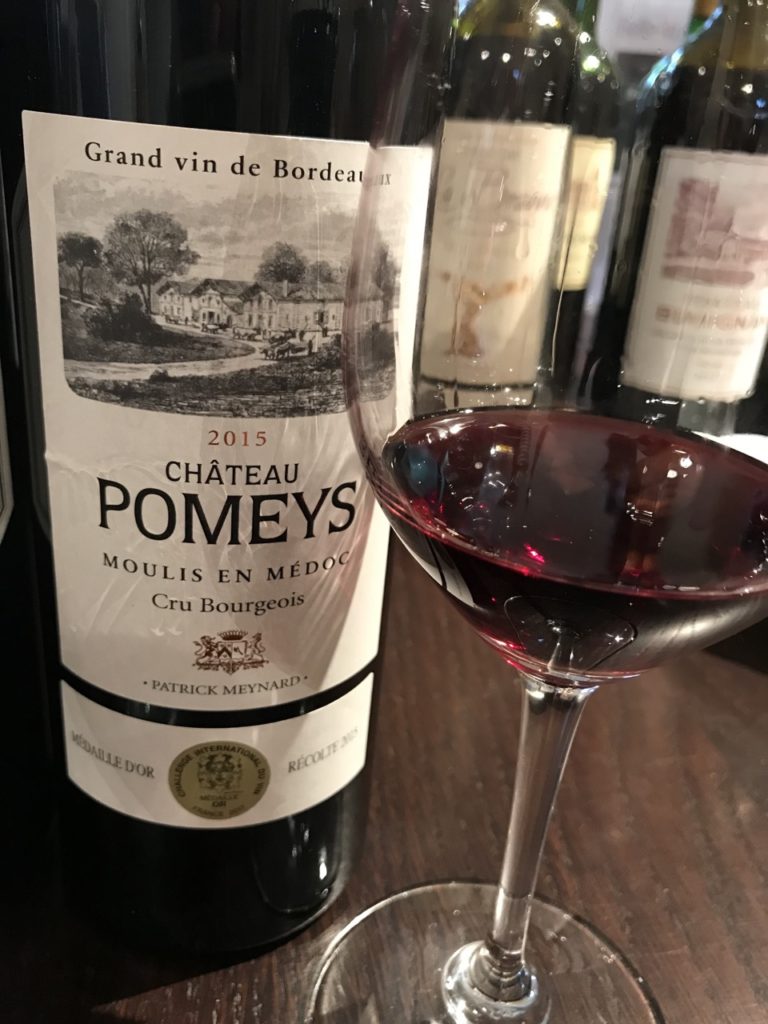

What’s Cabernet France (Chateau Magnol)? 😉
Nice read, thank you!